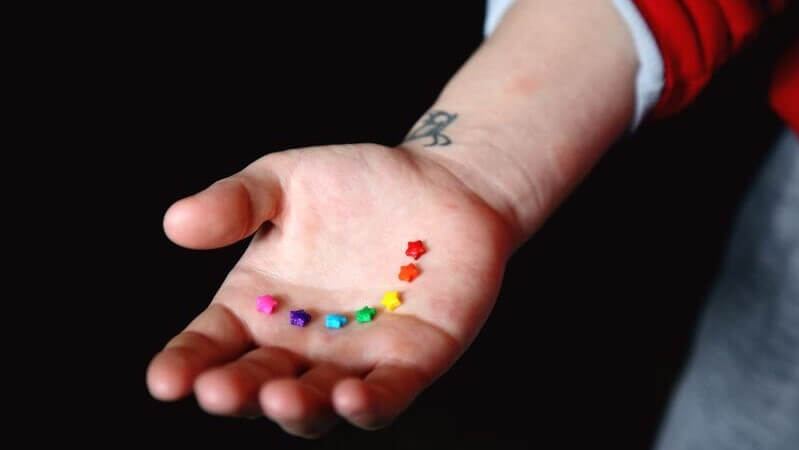Asexuality is a sexual orientation that is often misunderstood, leading to many myths and misconceptions surrounding it. In this article, we will explore what asexuality is, common misconceptions surrounding it, and how to support asexual individuals.
What is Asexuality?
Asexuality is a sexual orientation characterized by a lack of sexual attraction or desire. Asexual individuals may still experience romantic attraction and desire intimate relationships, but they do not experience sexual attraction or have a desire for sexual activity.
Asexuality is a normal variation of human sexuality, and it is estimated that approximately 1% of the population identifies as asexual. Asexuality is not a medical condition, mental disorder, or trauma response.
Myths and Misconceptions
Unfortunately, there are many myths and misconceptions surrounding asexuality. Let’s take a closer look at some of the most common ones:
Myth #1: Asexuality is a Medical Condition
Asexuality is not a medical condition or disorder. It is a sexual orientation, just like heterosexuality, homosexuality, or bisexuality. Asexuality is not something that needs to be fixed, cured, or changed.
Myth #2: Asexual People are Cold and Unfeeling
Asexual individuals are not cold or unfeeling. They simply experience attraction and desire differently than allosexual individuals. Asexuality is a spectrum, and asexual individuals may still experience romantic attraction, emotional intimacy, and love.
Myth #3: Asexual People Cannot Experience Romantic Love
Asexual individuals can experience romantic love and desire romantic relationships. Romantic attraction and sexual attraction are not the same thing, and it is possible to experience one without the other. Asexual individuals may choose to engage in non-sexual forms of intimacy, such as cuddling or kissing, to express their romantic attraction.
Myth #4: Asexual People are Prudish or Repressed
Asexual individuals are not prudish or repressed. They simply do not experience sexual attraction or have a desire for sexual activity. Asexuality is not a choice or a behavior, and asexual individuals should not be judged or shamed for their orientation.
Asexuality and Relationships
Asexual individuals may choose to pursue romantic or non-romantic relationships. Let’s take a closer look at each type of relationship:
Asexual People in Romantic Relationships
Asexual individuals may choose to pursue romantic relationships with allosexual individuals. Communication is key in these relationships, as both partners will need to understand and respect each other’s boundaries and needs. Asexual individuals may choose to engage in non-sexual forms of intimacy, such as cuddling or kissing, to express their romantic attraction.
Asexual People in Non-Romantic Relationships
Asexual individuals may choose to pursue non-romantic relationships, such as friendships or queerplatonic relationships. These relationships can still be intimate and fulfilling, even without sexual activity.
Supporting Asexual Individuals
It is important to create a safe and accepting environment for asexual individuals. Here are some ways you can support asexual individuals:
Education and Awareness
Educate yourself and others about asexuality to increase understanding and awareness. Challenge and correct harmful myths and misconceptions when you hear them. Use inclusive language that recognizes asexuality as a valid sexual orientation.
Creating Safe Spaces
Create safe spaces where asexual individuals can feel comfortable expressing themselves and being themselves. This can include LGBTQ+ groups, asexual meetups, or online communities. Make sure these spaces are inclusive and welcoming to all asexual individuals, regardless of their romantic or gender identity.
Respect and Validation
Respect asexual individuals’ boundaries and choices. Do not pressure them into sexual activity or try to “fix” them. Validate their experiences and recognize asexuality as a valid sexual orientation. Ask for consent before engaging in any kind of physical intimacy, and respect their response.
Conclusion
Asexuality is a valid and normal sexual orientation, but it is often misunderstood and stigmatized. By educating ourselves and others, creating safe spaces, and respecting and validating asexual individuals, we can support and celebrate their identities.
FAQs
Q: What does asexuality mean?
A: Asexuality is a sexual orientation where an individual experiences little to no sexual attraction or desire towards others.
Q: Is asexuality a disorder or a choice?
A: No, asexuality is neither a disorder nor a choice. It is simply a part of an individual’s innate sexual orientation, just like being heterosexual, homosexual, or bisexual.
Q: Can asexuality be changed or cured?
A: No, asexuality is not something that can be changed or cured. It is an inherent aspect of an individual’s sexual orientation.
Q: Are all asexual people the same?
A: No, asexuality is a spectrum, and different individuals who identify as asexual may have different experiences and feelings towards sexual attraction and desire.
Q: Can asexual people still have romantic relationships?
A: Yes, asexual individuals can have romantic relationships and experience romantic attraction. Asexuality refers specifically to sexual attraction or desire, while romantic attraction is a separate aspect of an individual’s sexuality.
Q: Do asexual individuals experience any sexual feelings or behaviors?
A: Some asexual individuals may experience sexual feelings or engage in sexual behaviors, but they still do not experience sexual attraction or desire towards others.
Q: Can asexual individuals have children?
A: Yes, asexual individuals can have children through a variety of methods, including adoption, surrogacy, or assisted reproductive technology.
Q: Is asexuality a relatively new concept?
A: No, asexuality has been a recognized sexual orientation since the late 1970s, although it has gained more visibility and acceptance in recent years.
Q: How can I be a good ally to asexual individuals?
A: You can be a good ally to asexual individuals by respecting their sexual orientation, not pressuring them to change or “fix” themselves, and being inclusive
